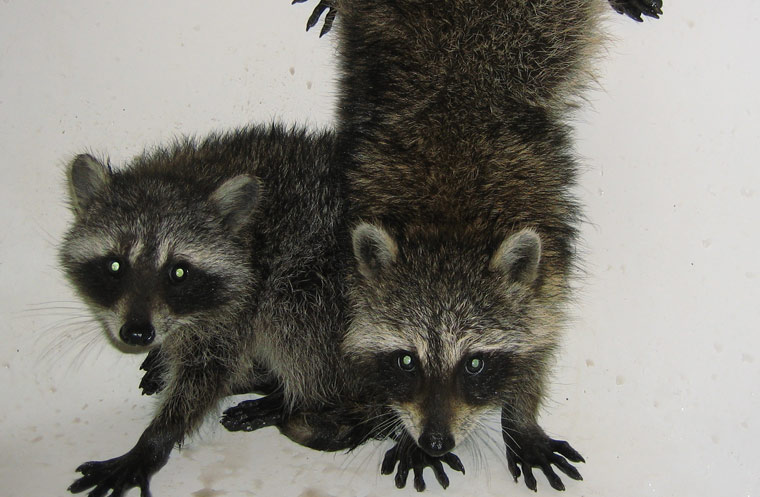- info@wildlife-removal.com
Call us for help in your town
Wildlife Removal Education
Raccoons in the Attic: Are There Babies?
Need raccoon removal in your hometown? We service over 500 USA locations! Click here to hire us in your town and check prices - updated for year 2020.
Although you might come across the odd case where a male raccoon has entered a human home or commercial building and set up a home, there is a greater chance that invading raccoons are females. Read about How to get raccoons out of an attic.

Male raccoons are very solitary creatures. They come together with females to mate, and they’ll also fight with other males during this time, over mating rights and territories as well as food. Males will come together with females during winter, curling up and sleeping in the same den spots and helping themselves to food stores, but they’re not really known for sticking around once the kids come along in spring and summer.
Female raccoons are not solitary creatures. It is quite common to find mothers and daughters in groups together. Females stay with their mothers when they are young for longer than the males do, and even when they are separated, can come back together in the same den and feeding sites during maternity periods and winter. Females will teach their young, specifically the females, where to find these spots, sharing their knowledge through the generations.
If you have a male raccoon in your attic, it’s probably alone.
If you have a female raccoon in your attic, it’s probably not alone. Read about 5 Signs of Baby Raccoons in the Attic
The time of year will help you work out the answer to your question — are there baby raccoons in the attic? Although northern areas of the United states tend to have raccoon birthing periods slightly earlier on than the southern states do, from late January to mid-late March seems to be when the raccoons are breeding. Sixty or so days later, the babies are born — late March to mid-late June. If you have raccoons in your attic during this time, there’s a very high chance that you have a female with kits.
Baby Raccoons in the Attic – Does it Matter?
Well, yes. It very much does matter. If you have young raccoons in your attic, you will need to modify your removal methods to better suit the scenario. You can’t seal up a home when you have waited for the mother to leave. The kits will still be in the nest INSIDE your home. They will die in there without their mother, and then you’ll have carcasses and a bad smell to clean up. Once you’ve found the culprits, of course.
Female raccoons will also not give up on her young without a fight. She WILL attempt to get back into the building, and if that means breaking off actual bits of your home to do it ... well, she’ll do just that.
The good thing about having female raccoons in the attic is that you can use male raccoons to your advantage. It’s not possible to gather round a few male raccoons to scare them out of the space they have inhabited, but you can use male raccoon urine, in the form of wildlife eviction fluid. This is made up of the urine and other secretions from various male predators — raccoons, foxes, coyotes, etc. These are ALL predators of female raccoons and, more specifically, her youngsters.
If a mother smells the urine of male predators around, she will fear for the safety of her young and will move them immediately. Out of all possible raccoon repellents, this is the only one that seems to have any REAL success.
Go back to the Raccoon Removal page, or learn tips to do it yourself with my How to Get Rid of Raccoons guide.


















